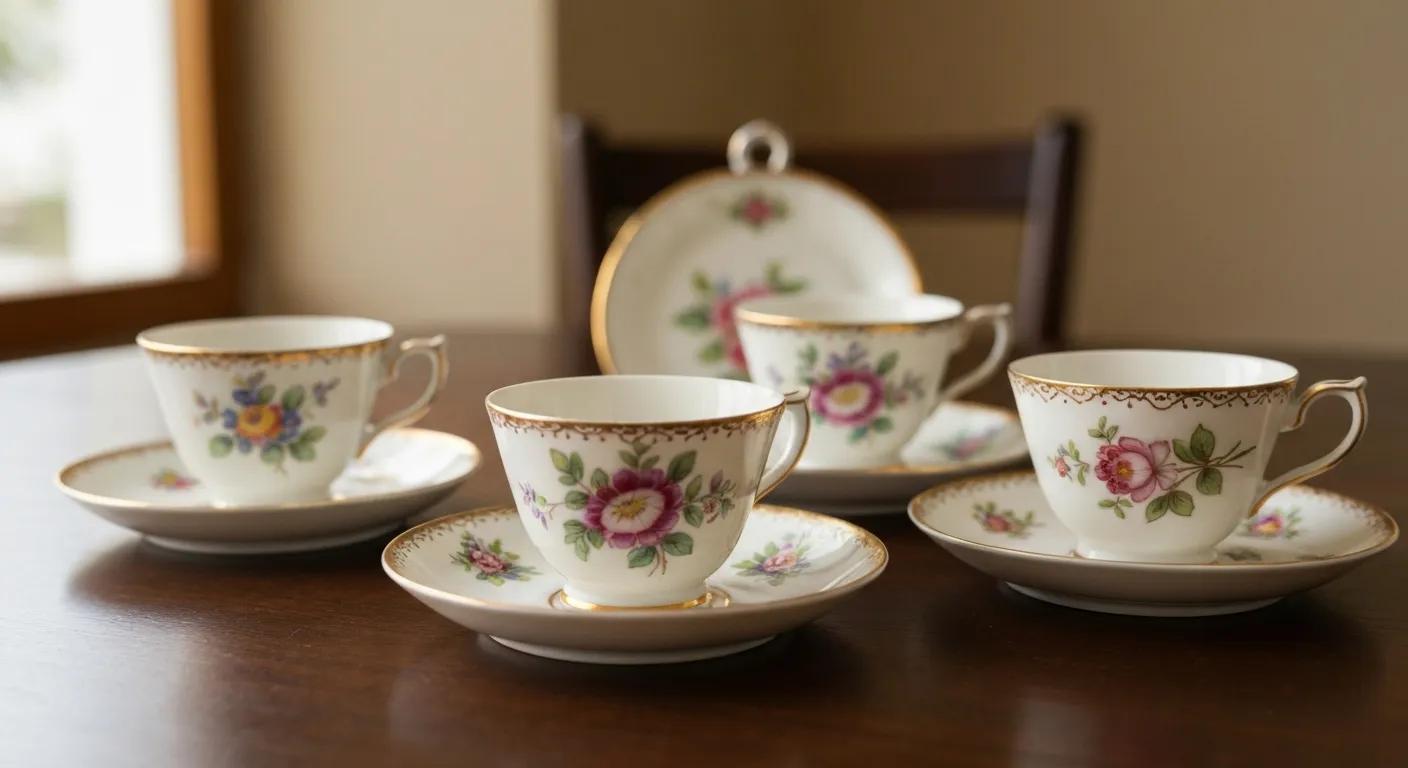Using reclaimed wood to craft handmade furniture transforms salvaged timber into durable, story-rich pieces while cutting down new logging by repurposing existing materials. This approach captures the essence of sustainability and authenticity, offering homeowners and business owners cost-effective, eco-friendly solutions without sacrificing craftsmanship. In this guide, you’ll discover the environmental advantages of reclaimed wood, its durability, the unique character and history each piece embodies, essential care techniques for teak and solid wood, how Chic Teak delivers value through a direct to consumer model, room by room furniture recommendations, and clear answers to common concerns. By exploring these topics, you’ll gain insights to choose, maintain, and invest in handmade furniture from reclaimed wood that aligns with both your budget and your commitment to the planet.
What Are the Environmental Benefits of Handmade Reclaimed Wood Furniture?
Handmade furniture from reclaimed wood repurposes timber that would otherwise require landfill disposal, reducing demand for new harvesting and preserving mature forests.
Environmental Benefits of Reclaimed Wood
Research indicates that utilizing reclaimed wood significantly reduces deforestation by decreasing the demand for new timber harvesting. This practice conserves critical habitats and biodiversity, as each piece of furniture made from reclaimed wood substitutes for logs that might otherwise be harvested from old-growth forests.
United States Environmental Protection Agency, "Wood and Wood Products" (2024)
This citation supports the article's claims about the environmental advantages of using reclaimed wood by providing a verifiable source on the topic.
By diverting existing wood into furniture production, this process lowers the carbon emissions associated with milling virgin lumber and prevents useful material from becoming waste. For example, reclaiming one ton of wood can save up to 17 mature trees while cutting energy use and landfill load simultaneously, setting the stage for a comprehensive look at how sustainability unfolds across three key areas.

How Does Reclaimed Wood Reduce Deforestation and Preserve Forests?
Reclaimed wood furniture significantly reduces deforestation by repurposing structural timber, which directly lessens pressure on old-growth forests. This mechanism preserves critical habitats and biodiversity, as each piece of furniture substitutes for logs that might otherwise be harvested. Incorporating reclaimed beams from deconstructed barns into tables and cabinets exemplifies how salvaged wood protects living forests while offering the same structural integrity found in new lumber.
In What Ways Does Reclaimed Wood Lower Carbon Footprint and Energy Use?
Reclaimed wood lowers carbon footprint by minimizing the energy-intensive processes of felling, transporting, and milling fresh logs. Salvaged timber often requires only cleaning, planing, and kiln-drying—steps that consume significantly less energy than harvesting and processing virgin wood. As a result, each reclaimed piece reduces greenhouse gas emissions associated with furniture production, reinforcing circular economy principles.
How Does Using Reclaimed Wood Help Divert Waste from Landfills?
Reclaimed teak and solid wood furniture diverts construction and demolition debris from landfills by reclaiming boards, joists, and beams for new designs. This mechanism prevents valuable wood from decomposing and releasing methane, a potent greenhouse gas, while transforming waste into long-lasting furniture. By integrating reclaimed planks into desks and shelving units, makers close the material loop and showcase waste reduction as a practical, aesthetic choice.
How Durable and Long Lasting Is Handmade Furniture From Reclaimed Wood?

Handmade furniture crafted from reclaimed wood is exceptionally durable and built to last, offering a quality comparable to new wood furniture. Our artisans meticulously select each piece of reclaimed timber, ensuring it meets high standards for strength and longevity. This careful selection process, combined with expert craftsmanship, results in furniture that is not only beautiful but also incredibly resilient, designed to be cherished for years to come.
What Makes Handmade Craftsmanship Enhance Furniture Longevity?
Handmade craftsmanship employs precise joinery, such as mortise and tenon or dovetail technique, and meticulous finishing that reinforce structural bonds. By hand-selecting boards for grain alignment and treating surfaces with care, artisans create furniture that resists splitting and abrasion. This attention to detail in the workshop translates to years of reliable service in homes and businesses alike.
What Unique Character and History Does Reclaimed Wood Furniture Offer?
Every reclaimed wood piece carries the patina of its past life—embedded nail holes, worm holes, weathered grain, and rustic knots—that tells a story of previous structures and environments. These imperfections transform into authentic design elements, offering visual richness and a tactile connection to history. Embracing these natural marks elevates interior spaces with one-of-a-kind furniture that intertwines narrative and functionality.
How Do Natural Imperfections Like Knots and Nail Holes Add Value?
Natural imperfections serve as organic signatures, affirming the furniture’s authenticity and craftsmanship. Embedded nail holes and mineral streaks convey provenance, while knots introduce contrasting textures and hues. These details function as built-in design accents, enriching surfaces with context and unobtainable patterns found only in aged timber.
Why Is Each Piece of Reclaimed Wood Furniture a Story in Itself?
Each reclaimed beam originates from a specific site—whether from a teak fishing boat, a riverside warehouse or rural barn—embedding cultural and environmental history into new furniture. This narrative mechanism fosters emotional resonance, allowing owners to integrate heritage and sustainable values into their décor. Such storytelling enhances perceived value, deepening the bond between owner and object.
How Does Reclaimed Wood Fit Various Interior Design Styles?
Reclaimed wood’s adaptable palette—from warm honey tones to silvery gray patina—harmonizes with rustic, industrial, Scandinavian, and contemporary interiors. Designers pair it with metal frames for loft aesthetics or sleek upholstery for modern appeal. This versatility ensures that reclaimed pieces complement both minimalist and eclectic schemes, extending their relevance across diverse design contexts.
How Do You Care for Handmade Reclaimed Wood and Teak Furniture?
Maintaining reclaimed wood and teak furniture involves routine cleaning, optional protective treatments, and environment management to preserve surfaces and structural integrity. Proper care prevents stains, pests, and moisture damage, ensuring that each handmade piece retains its durability and character. The following guidelines offer a clear pathway to long-lasting beauty. Typically we would recommend that if you want some additional protection, you can use a quality wood furniture wax or polish. Some good brands are Minwax and Howard Feed-N-Wax.
How Can You Protect Reclaimed Wood Furniture From Damage?
Shield reclaimed wood pieces from direct sunlight, rain, and extreme humidity by positioning them in stable environments. Use coasters and placemats to prevent liquid rings, and apply thin coats of clear sealant or wax to reinforce surfaces.
How Does Chic Teak Offer Value With Handmade Reclaimed Wood Furniture?
Chic Teak’s direct to consumer approach eliminates traditional retail markups by sourcing artisan workspaces and shipping finished furniture straight to customers. This value model delivers premium handmade designs at accessible prices, enabling significant savings compared to boutique dealers. By focusing on sustainable reclaimed teak and solid wood, Chic Teak blends eco-friendly ethics with cost efficient craftsmanship.
How Does Chic Teak’s Direct-to-Consumer Model Save You Money?
Chic Teak streamlines overhead by partnering directly with artisan workshops, cutting out wholesale and retail middlemen.
- Artisan sourcing replaces showroom expenses.
- Batch production minimizes waste and logistics costs.
- Customer facing e-commerce reduces marketing overhead.
These efficiencies lower final prices without compromising handcrafted quality, building trust and relevance for budget and environment conscious buyers.
What Do Customers Say About Their Experience With Chic Teak?
Customers praise Chic Teak for seamlessly blending enduring durability with unique character at fair prices. Many note the personalized service and transparency around wood origins, highlighting the company’s commitment to ethical practices. Positive testimonials emphasize how reclaimed furniture from Chic Teak elevates both residential and commercial spaces with lasting style.
Which Types of Handmade Reclaimed Wood Furniture Are Best for Different Rooms?
Reclaimed wood furniture adapts to every living and working space, offering tailored designs that maximize functionality and aesthetics. From communal dining areas to outdoor lounges, each room benefits from reclaimed pieces engineered for its unique demands and stylistic requirements.
What Are the Benefits and Styles of Reclaimed Wood Dining Tables?
Reclaimed wood dining tables provide sturdy social surfaces with rich grain patterns and distinct patina. Styles range from farmhouse to industrial, including trestled live edge slabs, cabinets with natural knots, and four leg tables. Their robust construction withstands frequent use, while artisanal finishes highlight natural imperfections, inviting conversation over warm, tactile surfaces. View our collection of dining tables.
What Makes Reclaimed Wood Ideal for Indoor Furniture?
Reclaimed wood dining tables, coffee tables, and consoles offer living rooms and kitchens a fusion of historical charm and modern resilience. Tables showcase rich patinas, while media cabinets incorporate hidden storage and robust joinery. Their adaptable color palette suits eclectic or minimalist environments, grounding spaces in authenticity.
Is Reclaimed Wood Suitable for Outdoor Furniture? What Are the Pros and Cons?
While Chic Teak does offer a large variety of outdoor furniture fashioned from new teak wood, we do not recommend using our reclaimed wood furniture outdoors. These pieces should only be used outside in a fully covered, and completely dry area. A covered area would be a location where the furniture stays completely covered and dry from all weather and elements, such as in a sunroom. Placing the furniture under a tarp, furniture cover or where indirect exposure to the elements is possible, is not sufficient protection and will damage this furniture—this damage would not be covered under our warranty. If you have any questions about how to care for our different types of furniture, don't hesitate to reach out.
What Are Common Questions About Handmade Reclaimed Wood Furniture?
Reclaimed wood furniture often raises queries about cost, craftsmanship, consistency, and sourcing transparency. Addressing these concerns builds authority and helps buyers make informed, confident decisions about sustainable investments.
Is Reclaimed Wood Furniture More Affordable Than New Wood?
Yes, reclaimed wood furniture often costs less over its lifetime because lower material fees and second-hand sourcing reduce initial outlay, and exceptional durability minimizes replacement expenses. This long-term value makes reclaimed pieces a sound financial choice.
How Does Handmade Furniture Differ From Mass-Produced Pieces?
Handmade furniture features bespoke joinery, careful board selection, and artisanal finishing—qualities absent in mass-produced items that rely on uniform laminates and mechanical assembly. This craftsmanship yields stronger joints, authentic surfaces, and unique character in every piece.
Are There Any Concerns About Pests or Consistency in Reclaimed Wood?
Proper kiln-drying and finishing eliminate pests before crafting, and skilled artisans sort planks for consistent moisture content and grain orientation. These controls ensure structural uniformity and pest-free furniture, combining safety with the unpredictable beauty of natural wood.
How Can You Verify the Sustainability and Ethical Sourcing of Teak Wood?
Ethical sourcing verification comes from tracing wood origins, reviewing supplier certifications, and confirming reclaimed status through documentation. All of the wood used in Chic Teak furniture is FSC (Forest Stewardship Council) certified, so you can rest easy knowing it's from sustainable and trusted sources. Transparent supply chains give buyers confidence that their teak furniture meets stringent environmental and social standards.
Handmade furniture from reclaimed wood embodies a harmonious balance of environmental stewardship, enduring strength, and singular aesthetic appeal. By following proper care practices for teak and salvaged timber, owners can preserve these heirloom pieces for generations. Chic Teak’s direct-to-consumer model delivers sustainable craftsmanship at accessible prices, enabling you to furnish every room with authentic character and responsible design. Embrace reclaimed wood today and transform your spaces with furniture that tells a story while protecting the planet.
Who are we, and where does our knowlege of reclaimed wood furniture come from?
At Chic Teak Inc., we are a passionate team of artisans, designers, and eco-conscious enthusiasts dedicated to the art of reclaimed wood furniture. With over 25 years of experience in handmade furniture and sustainable design, we have cultivated a deep understanding of the materials we work with and the stories they carry. Our commitment to craftsmanship and sustainability drives us to create unique pieces that not only enhance your living space but also serve as a testament to the beauty of reclaimed wood. Each item in our collection is a blend of artistry and functionality, ensuring that every piece tells a story while standing the test of time.
Our expertise in reclaimed wood furniture stems from a combination of hands-on furniture selection and a profound respect for the environment. We believe that every piece of reclaimed wood has a history, often originating from old barns, industrial buildings, or fallen trees that have undergone natural aging. This rich history not only adds character to our furniture but also allows us to reimagine materials that might otherwise be lost. Our team actively researches sustainable sourcing practices and collaborates with our overseas artisans to ensure that we are using wood responsibly, and that's FSC Certified (Forest Stewardship Council). Through continual learning and a commitment to quality, we strive to educate our customers about the benefits of reclaimed wood, from its durability to its environmental impact, fostering a greater appreciation for sustainable living in the process.
Conclusion
Handmade furniture from reclaimed wood offers a unique blend of sustainability, durability, and character, making it an ideal choice for eco-conscious consumers. By choosing these pieces, you not only invest in high-quality craftsmanship but also contribute to reducing waste and preserving our forests. Explore Chic Teak’s collection to find the perfect reclaimed wood furniture that aligns with your values and enhances your home. Start your journey towards a more sustainable lifestyle today by discovering our exquisite range of handcrafted designs.


